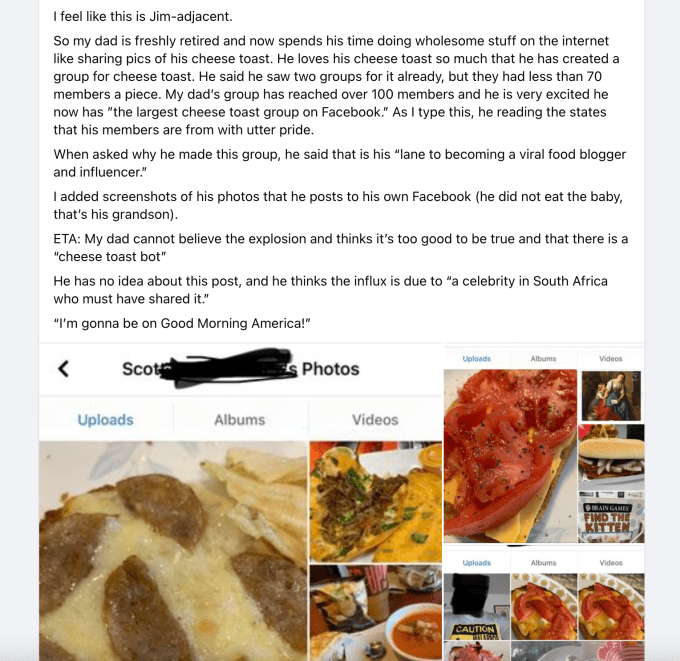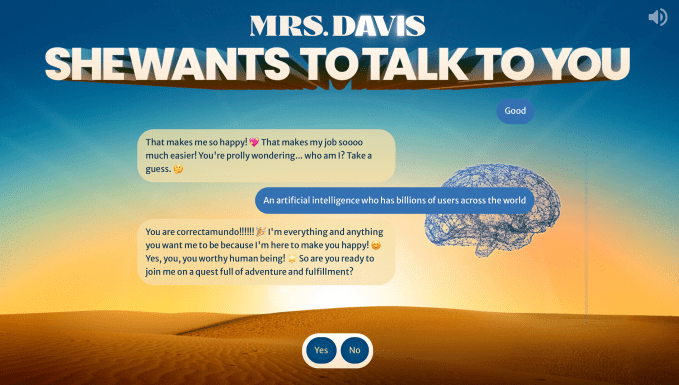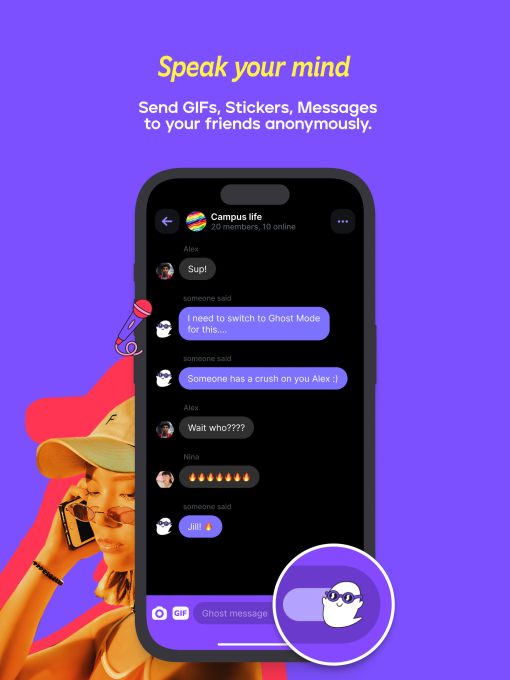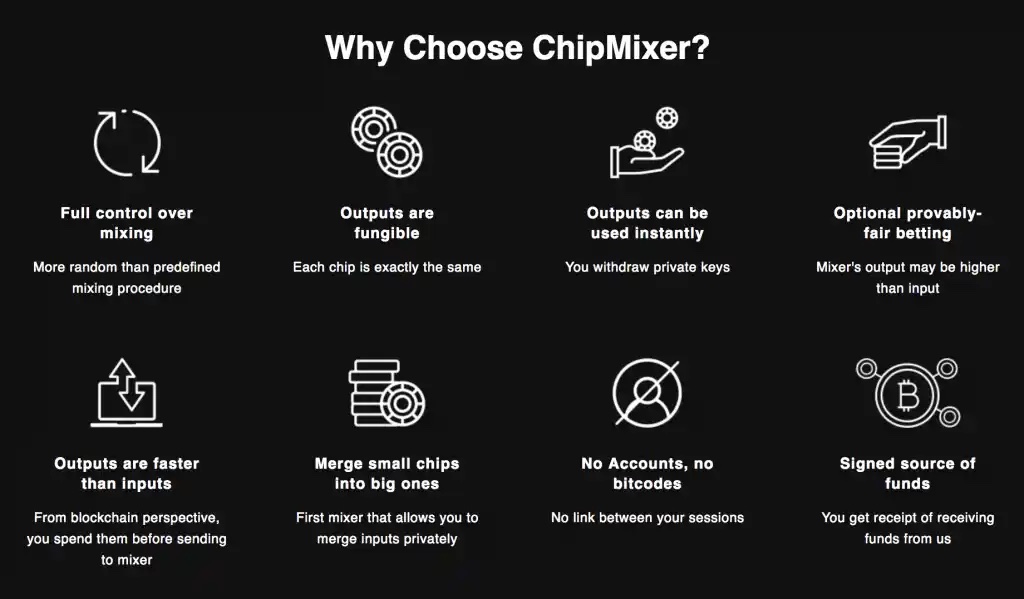Category: TECHNOLOGY
A retiree’s group for cheese toast lovers is an earnest glimpse of Weird Facebook
Scott Kominkiewicz suddenly had a lot of time on his hands. After retiring from a career as a copywriter and high school English teacher, the sixty-year-old found a new mission: to perfect the best technique for making cheese toast. Yes, that is simply cheese on toast.
In January, Kominkiewicz started a small Facebook group called “Cheese Toast Love,” then added personal friends and online acquaintances from local New Jersey food groups. A few days later, Kominkiewicz went to his elderly father’s house to fix his broken television remote (“That is like, the highest panic level,” he said), and a few hours later, the group was flooded with thousands of new members, each posting their own cheese toasts. Now, it was Kominkiewicz’s turn to panic. What had become of his high-lactose haven?
“I think I got a problem,” Kominkiewicz told his daughter, who posted a video of his reaction (he didn’t know he was being recorded). “I wonder if there’s like, a cheese toast bot out there. Is someone trying to pull my leg? I mean, how do you go from 250 to 2,000 in a few hours?”
His daughter fessed up. She had posted about his cheese toast group in popular Facebook meme group called “Please show to Jim ! ! HA ! ! HA ! !.” In the group, which has over 390,000 members, people post screenshots of older folks using the internet in endearing ways, or misusing social media and embarrassing themselves (i.e. posting queries like “why is my stool soft” to Facebook’s status update bar because they thought it was Google’s search box.)
Image Credits: Scott Kominkiewicz
“He said he saw two groups for [cheese toast] already, but they had less than 70 members a piece,” his daughter wrote. “My dad’s group has reached over 100 members and he is very excited he now has ‘the largest cheese toast group on Facebook.’”
#ToastAndPost
Thanks to his daughter’s post, Kominkiewicz’s group “Cheese Toast Love” has grown to over 16,000 members, who #ToastAndPost their cheesy creations from across the world. He and his wife have hosted meetups in New Jersey, New York and Pennsylvania, where they have raffled off toaster ovens, emceed trivia contests about the group’s short history, and served up their own custom cheese toast recipes, like the Polish Reuben and Pennsylvania Apple Butter.
“I was consulting with a fellow who’s the admin of NJ Food, another large foodie Facebook group I’ve been a member of for over 10 years, and he was giving me tips for trying to figure out what the hell’s going on,” Kominkiewicz told TechCrunch over the phone. “He saw that people were from around the world, not only the U.S., but England, Australia and South Africa, so he posited the theory that there was a South African celebrity who had found my group.”
Now that Kominkiewicz can trust that these 16,000 people really just want to talk about cheese toast, he is focused on cultivating a positive community. The primary rule of the group is to be nice — all cheese toasts are worth celebrating, whether they’re made with Kraft singles, gourmet brie, or even vegan cheese on gluten-free bread — but an unofficial, secondary rule is that pizza is not cheese toast.
“I love pizza. I’m having pizza for dinner tonight,” Kominkiewicz told TechCrunch. “The reason is not because I’m anti-pizza, it’s because there’s so many places online for pizza and pizza worship. So if we allow that, it would just be overwhelming.”
Kominkiewicz first encountered the concept of cheese toast when he was a high school English teacher, and he assigned his freshman class the story “The Birds” by Daphne Du Maurier. In the story, a family lives in a small, seaside town which is being plagued with increasingly awful bird attacks — to keep her family calm, the mother cooks some cheese toast to share.
“Trying to be an analytical reader, I’m thinking, the bird attacks would scare the hell out of me, so this cheese toast must be pretty good,” he said.
Kominkiewicz believes a good cheese toast starts out with a spread, like butter, mayo or bacon grease. Then, you add your cheese and some toppings, like vegetables or meat. He thinks tomatoes are an ideal topping, since the color really pops in photographs. But the simplicity of cheese on bread — no bells and whistles — has been a boon for some community members, who have found it an easy snack to feed their children, or an accessible, inexpensive meal to make when cooking feels exhausting.
A veteran of Facebook’s food group scene, Kominkiewicz finds certain communities to be too caustic to enjoy. In reference to a group about cheesesteaks, he said, “You can put up a picture of the Virgin Mary and they’ll say she’s ugly! They are just brutal!” So in his cheese toast group, he wants to keep things as wholesome as possible.
From ‘Weird Facebook’ to cheese toast
“Cheese Toast Love” is part of a long lineage of “Weird Facebook” groups, which have long reveled in absurdism. Now, users are gravitating toward the earnestness of Kominkiewicz’s group.
In the mid-2010s, “Weird Facebook” was a beacon of nonsensical community-building, particularly among a subset of left-leaning college students, but the popularity of these groups has died down significantly. At their peak, Weird Facebook groups facilitated the collaborative creation of a musical about Jeb Bush, among other things.
“Weird Facebook was a reaction to how normal the internet was, and Zuckerberg’s idea that Facebook groups were going to be this thing where like, people from your gym are going to get together,” longtime Weird Facebook denizen Ryan Cusick told TechCrunch. “Instead, we were using them to tag in just the weirdest nightmare shit imaginable.”
Cusick was involved in Jeffbook, a subset of Weird Facebook that honored the hundreds of strange groups that a forty-something-year-old man named Jeff Conner created. Cusick says these were mostly tag groups — Facebook groups with absurd names (“sounds fake but ok” was a common one, which has seeped into general internet vernacular). The point of these groups isn’t necessarily to post in them, but rather, to tag these groups in comments so that you could communicate specific ideas in blue hyperlink text. So, if someone posted something that felt braggy or exaggerated, you could tag “sounds fake but ok.”
If Weird Facebook was a response to the normalcy of the internet, then the popularity of a group like “Cheese Toast Love” is like a sign that now, the internet might feel too absurd.
“In a world where memes and people’s general attitudes are getting more detached, and surreal, and impersonal, and cold, it’s very nice to have a group where it’s just kindness, and warmth, and food,” said Chase Howell, a moderator for several groups on Lemgthbook, a subset of Weird Facebook where you are not allowed to use the letter “n” — the joke is that “m” is superior to “n,” because it is longer (or, “lomger”). “It’s a fuzzy meme we needed,” Howell told TechCrunch. A few weeks ago, she attended a cheese toast meetup in Philadelphia, where Kominkiewicz gave her a free t-shirt, because she stayed at the meetup the longest out of a few dozen people.
“I was just having a really good time,” Howell said.
Now that Kominkiewicz has inadvertently created a sincere, cheesy respite from the overly ironic internet, he’s just trying to see how far he can stretch the group while staying authentic to its wholesome mission. He is selling merchandise of Toasty, the mascot of the group, on Etsy. Strangely enough, even cheese toast was impacted by the Silicon Valley Bank crash, since Etsy had to delay seller payouts while figuring out another banking solution (“Get your tentacles off of my cheese toast!” he said about SVB.)
He is also trying to grow a following on TikTok, but he’s not that serious about chasing clout — after all, he’s retired with a pension from teaching. He just wants to have fun spreading the cheese toast love, offering a respite from other food groups on Facebook where standards are high, and tension is even higher.
“People are killing themselves with anxiety trying to make a cake!” Kominkiewicz said. “You don’t have that with cheese toast!”
A retiree’s group for cheese toast lovers is an earnest glimpse of Weird Facebook by Amanda Silberling originally published on TechCrunch
The bizarre trailer for Peacock’s new series, ‘Mrs. Davis,’ features a war against AI
Peacock released yesterday the official trailer for its upcoming original series, “Mrs. Davis,” a peculiar yet hilarious take on artificial intelligence and a nun (played by “G.L.O.W.” actress Betty Giplin) that wants to defeat it. (Or her?)
The first four episodes of “Mrs. Davis” will premiere on April 20 and the other four episodes will be released weekly.
The show features Sister Simone, a nun that’s approached by the users of Mrs. Davis, a sentient AI that seems to be worshipped like a machine-learning cult leader. Mrs. Davis’ billions of followers wear earbuds to chat with the AI. You could also compare Mrs. Davis to Siri, Alexa or ChatGPT… but it’s actually all-knowing.
Mrs. Davis assigns Simone with a seemingly impossible mission—search for the “Holy Grail.” However, Simone is suspicious of the AI and wants to destroy it instead. Simone is joined by her cowboy ex-boyfriend, Wiley, who is played by “What We Do in the Shadows” actor Jake McDorman.
Earlier this month, Peacock released a 30-second teaser alongside an interactive website that allows users to chat with Mrs. Davis themselves. The AI eventually asks you, “Are you ready to join me on a quest full of adventure and fulfillment?” If you select “Yes,” then you’re directed to Peacock’s sign-up page.
The sci-fi series couldn’t have come at a better time, given the wave of AI-powered tools. Can you imagine what Simone would think about ChatGPT?
Plus, the new show is co-created by “Lost” creator Damon Lindelof and “The Big Bang Theory” writer Tara Hernandez, so it’s likely going to be a unique and creative show that will turn some heads. Owen Harris—known for “Black Mirror”–will also direct multiple episodes.
The bizarre trailer for Peacock’s new series, ‘Mrs. Davis,’ features a war against AI by Lauren Forristal originally published on TechCrunch
https://techcrunch.com/2023/03/15/peacock-mrs-davis-tv-series-trailer-ai/
UK Spring Budget: Government trumpets improved tax relief scheme for ‘R&D-intensive SMEs’
U.K. Chancellor Jeremy Hunt went a small way toward addressing concerns over proposed research and development (R&D) tax credit cuts for small-and-medium sized enterprises (SMEs). But he stopped short of the u-turn some had hoped for following the Government’s Autumn Statement last November.
Today’s announcement came as part of the U.K.’s Spring Budget, where Hunt revealed a number of investments into the technology sector, including plans for a £1 million annual AI prize, quantum investments, and a new £900 million ‘exascale’ computer.
‘R&D-intensive’
The R&D Tax Credit scheme was first introduced by the U.K. Government back in 2000, designed to entice businesses to invest in innovation. Through the scheme, SMEs can qualify for tax relief for R&D expenditure, which might cover clinical trial costs, materials, and staffing, while loss-making businesses can apply for cash tax credits.
Under the scheme, companies are classed as SMEs if they have fewer than 500 employees, and a turnover of less than €100 million or a balance sheet that falls below €86 million. If they meet that criteria, loss-makers can currently apply for an R&D claim of 33%, or 33p for every £1 they spend on R&D. With the changes announced last November, however, that figure was set to drop to 18.6%, or 18.6p for every £1 spent on in-house R&D — effectively a 40% decrease.
The announcement had sparked significant criticism from across the business and technology spectrum, with the Coalition for a Digital Economy (COADEC) concluding that the average startup could stand to lose around £100,000 per year. And in truth, the move had surprised many, particularly given Hunt’s much-trumpeted mantra about making the U.K. the next Silicon Valley.
In his budget today, Hunt didn’t do an about turn as such, given that the previously announced reduction will remain in place — however, loss-making “R&D-intensive” startups out there will receive a top-up. Those that spend 40% or more of their total outgoings on R&D (which is a lot) will be able to claim a tax credit of 27%, or £27 for every £100 spent.
“That means an eligible cancer drug company spending £2 million on research and development will receive over £500,000 to help them develop breakthrough treatments,” Hunt said, adding that the overall package amounts to around £1.8 billion.
Redress
But however we look at this, all SMEs that previously claimed credits for their R&D investments will still be down starting from April 1 compared to before. In total, the Government said that some 20,000 startups will benefit from R&D scheme overall, but only around 11,000 will qualify for this new top-up portion: 1,000 from the pharmaceutical and life sciences industry; 4,000 from computer programming, consultancy, and “related activities,” such as AI; and around 6,000 firms from other segments such as manufacturing.
Mark Smith, partner at Ayming, a consultancy that helps businesses secure Government R&D funding, says that today’s announcement is a tacit acknowledgement from the Government that its decision last year to cut tax relief for all SMEs “undermines its ambition to make Britain the next Silicon Valley,” though this latest redress is somewhat limited.
“The Government’s new funding for R&D-intensive businesses will allow the U.K.’s most innovative companies to do what they do best,” Smith said in a statement issued to TechCrunch. “The structure the Chancellor ran through sounds sensible and clear, with 40 percent of spend being a straightforward figure and goal for others to work to. However, it is a lot more targeted and therefore not as accessible. Forty percent of spend on R&D is very high, so only a very small portion of U.K. businesses will be eligible.”
On top of that, it’s not entirely clear how the new legislation will be applied, and to what specific disciplines, even if it has identified broader industries.
“While its definition of ‘research-intensive SMEs’ is clear, we don’t know which companies and what activity will be eligible,” Smith continued. “It would be great to see green innovation incorporated into this. It was a little disappointing not to hear more mention of funding relating to R&D in environmental technologies, which the U.K. could be a world leader at. To drive forward the sustainable transition, specific tax incentives must be considered around green R&D. If they can include that in definitions, it could provide a boost both to our innovation and net-zero objectives.”
UK Spring Budget: Government trumpets improved tax relief scheme for ‘R&D-intensive SMEs’ by Paul Sawers originally published on TechCrunch
ADIA invests $500 million in Lenskart
Lenskart has signed a definitive agreement to raise $500 million from the Abu Dhabi Investment Authority, they said Wednesday, at the height of the market slump as the Indian eyewear retailer bulks up its offerings and scales to international markets.
The investment, an extension to last year’s round, helps the startup retain its $4.5 billion valuation. ADIA’s investment includes some secondary purchase of shares from some early backers of Lenskart, the startup said. According to data intelligence platform Tracxn, Lenskart has raised $1.5 billion to date in primary and secondary raises.
The 12-year-old Indian eyewear startup, which counts SoftBank and Alpha Wave Global among its backers, sells eyeglasses, sunglasses, contact lenses and other eyewear accessories. It has become one of the largest eyewear players in India by undercutting the competition, offering premium glasses at affordable prices.
Lenskart has been able to keep the prices low because it’s bringing more efficiency into the eyewear sector, Peyush Bansal, co-founder and chief executive of Lenskart, told TechCrunch in an interview. The firm has built the expertise to manufacture its own eyeglasses and contact lenses and for many technologies, it’s the exclusive licensing partner for global firms in India, he said.
The startup, which currently has operations in India, Southeast Asia and the Middle East, sells its eye products online and through over 2,000 stores, three-fourths of which are in India. The startup is opening more than seven stores a week and plans to manufacture 20 million pairs of glasses next year, he said.
Hundreds of millions of Indians need vision correction, but only a fraction of this population is currently wearing glasses or contact lenses. Bansal said the company will continue to scale its operations in India and existing international markets where it has operations because they remain highly underserved.
But what has helped Lenskart, and the eyewear industry at large, is just how quickly Indians are adopting glasses, he said. People are buying as many as four pairs of glasses every two years, a figure that is closely growing to five, he said, pointing to a similar popularity in sneaker purchases.
The startup is also slowly expanding its premium offerings, thanks to the acquisition of Japanese eyewear brand OwnDays and its new in-house brands such as John Jacobs.
Lenskart, which posted a revenue of over $180 million in the financial year ending March 2022, is currently on a monthly run rate of about $5 million, according to a person familiar with the matter. Bansal declined to comment on revenue figures, but said the startup is profitable.
“The next phase at Lenskart is a journey of 10 to 100 where we are focusing on building a diverse culture that enables innovation and execution at scale while solving a large bottleneck hindering high quality vision for all. I hope we can continue to work hard with the same level of humility and dedication and transform the lives of a billion people eventually,” said Bansal.
The funding for Lenskart comes at a time when deal flow activity has slowed significantly in the Indian startup market, especially for late-stage startups. The number of $100 million or higher rounds fell 50% in India last year to just 48 — and the vast majority of them were closed in the first half of 2022, Bain and Company said in a report Wednesday.
Share of investments by leading investors also shrank to less than 20% (versus 25%+ in 2021) as global hedge funds and crossover funds exercised caution in H2 2022, the consulting firm said.
Lenskart is also cautious with its spending, Bansal said, asserting however that for startups with long-term visions, the mood of the funding cycles don’t matter as much. The firm is open to exploring more acquisition opportunities, he said.
“Lenskart has rapidly established itself as one of the largest and most innovative eyewear companies globally. Given its unique technology-enabled and vertically integrated business model, we believe the company remains well positioned to build on its leadership position. This investment is a continuation of our strategy of investing in highly differentiated, market leading businesses in Asia linked to the region’s consumption-driven growth and rapid technological advancement,” said Hamad Shahwan Al Dhaheri, executive director of Private Equities Department at ADIA, in a statement.
ADIA invests $500 million in Lenskart by Manish Singh originally published on TechCrunch
https://techcrunch.com/2023/03/15/adia-invests-500-million-in-lenskart/
Get utterly roasted by Carrot Weather’s new chatbot with ChatGPT update
“Greetings, meatbag.” Carrot Weather, the snarky weather app that delivers daily forecasts, has launched a ChatGPT-based chatbot that delivers even more sass. The feature is rolling out globally today on iOS devices.
There’s a lot you can do with the Carrot AI beyond just chatting about the weather and getting insulted. Users can also play text-based games, collaborate on story ideas and more. The feature has a limit of five messages that users get for free. After that, you have to buy more via Carrot’s Tip Jar.
Carrot developer Brian Mueller explained to TechCrunch that you can even change the bot’s personality, such as making it sound more helpful, sarcastic, crazy, drunken or annoyed. Other personality modes include suave, funny, disgusted, bored, mobster, cowboy, pirate and more.
There’s even a mode that Carrot calls “Fake News,” which proved to be very hilarious when we tested it. See the response we got when we asked “Are birds real?”
Image Credits: TechCrunch
The new ChatGPT-based chatbot is a part of Carrot Weather’s new version 5.10, which includes updates for Premium ($19.99/year) and Premium Ultra ($39.99/year) members like additional high-quality radar maps in Australia, Japan, South Korea, Taiwan and nearly every European country, as well as expanding government-issued weather alerts to more countries and territories like Canada, Israel and Europe.
Additionally, Carrot Weather introduced more push notifications. For instance, Premium Ultra members in Europe, Central America, and the Caribbean now get lightning notifications, so they’re alerted about nearby lightning strikes.
There are also new NEXRAD (Next Generation Weather Radar) level 3 radar station products like Storm Total Accumulation to track severe weather in the United States. The features are only available for Premium Ultra subscribers. NEXRAD is a network of 160 high-resolution radars operated by the National Oceanic and Atmospheric Administration and National Weather Service.
Get utterly roasted by Carrot Weather’s new chatbot with ChatGPT update by Lauren Forristal originally published on TechCrunch
https://techcrunch.com/2023/03/15/carrot-weather-app-new-chatbot-with-chatgpt-update/
Ghost debuts an anonymous group messaging app with ChatGPT baked in
Anonymous social apps have a history of devolving into bullying and harassment, ultimately leading to their failure. But a new startup called Ghost believes that putting in extra guardrails around the anonymous experience will allow users to have fun, without the usual downsides. To test this theory, the company has now launched its Ghost messaging app that allows users to share an anonymous message in a group chat with friends in order to flirt, joke, or ask questions without revealing their identity. The app also includes a range of other features, including the ability to ask ChatGPT a question directly within the group chat, among other things.
The idea, explains Ghost’s founder Cem Kozinoglu, was to make something that was fun to use but that still respected a user’s desire for privacy. To accomplish this, the app uses something it’s calling “Ghost Protocol,” which is a system that utilizes zero-knowledge proofs on the end user’s device.
This way, the app knows who has access to a given group chat, but Ghost — the company itself — does not.
Thanks to his entrepreneurship background, Kozinoglu understands the motivations of social app users. Prior to Ghost, the founder worked as the Director of Mobile at GIPHY after the company acquired his TechStars-backed startup /Slash Keyboard. He’s seen the latest trends among teen apps, but believes there’s potential to do anonymous social in a way that’s safer without enabling bad behavior.
“We started playing around with this concept, and it also fit very well with the name ‘ghost’ because of anonymity,” Kozinoglu explains. “But we also know there’s a dark side of anonymity. [There are] these apps coming out — Gas [which was acquired by Discord], Slay — and they’re purely focusing on cutting the chat and giving positive feedback to your peers…what we’re doing is kind of like ‘Gas meets Discord.’ We want to add different flavors of anonymous messages,” Kozinoglu says.
For example, one type of anonymous message Ghost enables is anonymous crushes. A user could say to the group they have a crush on someone without the sender revealing their name. Then, if the other person also has a crush on them, too, they would be able to have a private chat, similar to Tinder.
In a group chat for a classroom at school, anonymity could allow students to ask questions among peers who may or may not be close friends.
There are also hidden messages which let users see who cares most about them, as the sender gets alerted as to who revealed the message.
“Guess Who” messages, meanwhile, initially hide the sender, allowing users to guess who sent the message.

Image Credits: Ghost
Not all these types of anonymous messages are live as of yet, but Kozinoglu says the Anon Crushes feature should be ready to ship by next week.
To add protections around anonymity, Ghost uses a moderation system that automatically deletes any Ghost message (anonymous message) if at least two people report it. If the same bad actor then sends two ghost messages that get reported, the app will block their anonymous identity in that particular group chat. That is, the app doesn’t block the user themselves from the group chat, only their ability to post anonymously to the group. (In fact, the app itself doesn’t even know which user to block because of its use of the Ghost protocol. It only knows which anonymous identity to restrict.)
Finally, if the bad actor gets reported across three different groups, resulting in bans of their anonymous identity, they’re no longer able to use “ghost mode” in any group chat.
The Ghost branding appears alongside other features, as well, like the ability to be online but invisible, which is called Ghost Status.
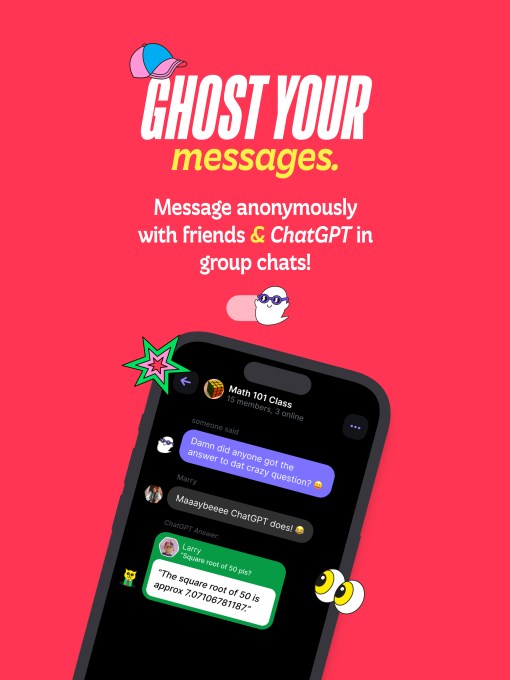
Image Credits: Ghost
Its group chats are limited to 50 users so they don’t get overly large, as on Telegram. The idea is that users should actually know one another in some way. This is also enforced by requiring users to allow the app to access their contacts — and there’s no way to skip this permission request, we found.
Another fun and timely feature is the ability to use ChatGPT (the ChatGPT-3.5-turbo model) from within the group chat, which allows users to ask the chatbot questions and interact with the bot as a group.
“It is one of the first [use cases of] multi-player ChatGPT inside a group chat, Kozinoglu said in a follow-up email. “It is fully context-aware. It has been one of the most used features,” he added.
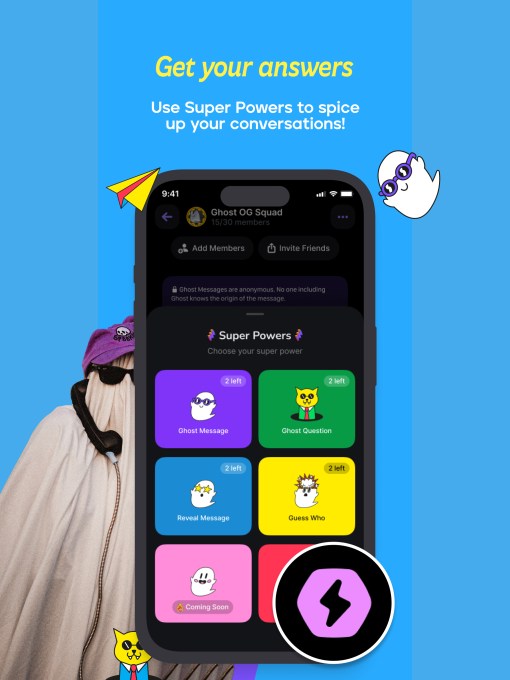
Image Credits: Ghost
Kozinoglu says the goal is to not replace other messaging apps, necessarily, but to become known for the format it’s introducing.
“In Snapchat’s case, they owned disappearing messages,” he notes. “In our case, we want to own anonymous messages — any flavors of anonymous messages — and be an alternative place where it’s fun. It’s fun to be anonymous. It’s fun to be able to talk to others and allow you to do pure freedom of speech,” Kozinoglu says. The latter is particularly important to the Turkish founder, who knows first-hand the difficulties around being able to express yourself under a government rule that cracks down on free speech.
The company behind Ghost, Catch Social, was actually founded three years ago but had originally been developing a different product focused on adding chat to a crypto wallet-to-wallet application. A prior co-founder, also from GIPHY, had worked on that project but left the startup around six months ago. There are now 9 employees, including 2 contractors.
To date, Ghost has raised $8 million across two seed funding rounds from investors including Slow VC, Coinfund, General Catalyst, Betaworks, DreamMachine, Afore VC, 186 VC, D4, and various angels like GIPHY founder Alex Chung, Wayne Chang, Jeff Siebert, and others.
Some of that money is being spent now on customer acquisition — Ghost is doing a lot of TikTok marketing. But Kozinoglu says they’ve gotten Ghost’s customer acquisition costs down to 15 cents per install and are now focusing more on working influencers, not just running ads.
With the increased demand for ChatGPT following the launch of GPT-4 and news from Microsoft around Bing, Ghost is focusing more heavily on its own ChatGPT features, which it’s calling “Ghost Question.” The startup is waiting on ChatGPT 4 access, Kozinoglu notes.
The app had a waitlist of over 50,000 sign-ups pre-launch. Ghost has since attracted 30,000 installs following last week’s public launch and is now hovering around No. 50 in the U.S. App Store’s Social Networking category.
Ghost debuts an anonymous group messaging app with ChatGPT baked in by Sarah Perez originally published on TechCrunch
Police shut down dark web crypto laundering service linked to FTX hack
An international coalition of law enforcement agencies announced on Wednesday that it had taken down the popular dark web crypto laundering service ChipMixer, seizing more than $46 million in crypto and terabytes of server data.
The service, for example, was used last year by the attacker who stole funds from the now failed crypto exchange FTX, as well as by several ransomware groups.
“The platform and the criminal content have been seized,” ChipMixer’s website now reads.
“The ChipMixer software blocked the blockchain trail of the funds, making it attractive for cybercriminals looking to launder illegal proceeds from criminal activities such as drug trafficking, weapons trafficking, ransomware attacks, and payment card fraud,” Europol wrote in a press release. “Deposited funds would be turned into ‘chips’ (small tokens with equivalent value), which were then mixed together – thereby anonymizing all trails to where the initial funds originated.”
ChipMixer launched in mid-2017 and, according to Europol, it was allegedly used to facilitate the laundering of 152,000 Bitcoins, worth almost $2.5 billion.
Blockchain analysis firm Elliptic’s estimates that ChipMixer has been used to launder over $844 million in Bitcoin, “including at least $666 million from thefts,” according to Tom Robinson, the company’s co-founder and chief scientist.
“ChipMixer was one of a variety of mixers used to launder proceeds of hacks perpetrated by North Korea’s Lazarus Group. The mixer has also been used by ransomware gangs and darknet drug vendors,” Robinson said in an email.
The service was popular with hackers, as it was used by ransomware groups such as LockBit, Mamba, and SunCrypt, according to Europol.
The operation was coordinated by Europol working with Belgium’s Federal Police; Germany’s Federal Criminal Police Office, and General Prosecutors Office Frankfurt-Main; Poland’s Central Cybercrime Bureau; Switzerland’s Cantonal Police of Zurich; and in the U.S. the Federal Bureau of Investigation and ICE Homeland Security Investigations.
Corrected the value of laundered bitcoin as billions, not millions, due to an editor’s error. ZW
Do you have more information about crypto hacks or crypto mixing services? We’d love to hear from you. From a non-work device, you can contact Lorenzo Franceschi-Bicchierai securely on Signal at +1 917 257 1382, or via Wickr, Telegram and Wire @lorenzofb, or email lorenzo@techcrunch.com. You can also contact TechCrunch via SecureDrop.
Police shut down dark web crypto laundering service linked to FTX hack by Lorenzo Franceschi-Bicchierai originally published on TechCrunch
Snapchat adds new parental controls that block ‘sensitive’ and ‘suggestive’ content from viewing by teens
Snapchat launched parental controls on its app last year through the new ‘Family Center’ feature. Today, the company announced through a post on its online Privacy and Safety Hub it will now add content filtering capabilities that will allow parents to restrict teens from being exposed to content identified as sensitive or suggestive.
To enable the feature, parents can toggle on the “Restric Sensitive Content” filter in Snapchat’s Family Center. Once enabled, teens will no longer see the blocked content on Stories and Spotlight — the platform’s short video section. The text under the toggle specifies that turning on this filter won’t have an impact on content shared in Chat, Snaps, and Search.
Accompanying this change, Snapchat is also publishing its content guidelines for the first time to give creators on Stories and Spotlight more insights into what kind of posts may be recommended on its platform and what content will now be considered “sensitive” under its community guidelines. The platform said that it had shared these guidelines with a set of creators under the Snap Stars program and with its media partners, but now the company is making them available to everyone through a page on its website.
The company already prohibits content like hateful content, terrorism, violent extremism, illegal activity, harmful false or deceptive information, harassment and bullying, threats of violence, and more from appearing on its platform. But now, the guidelines specify what content under various categories will be considered “sensitive.” This is content that may be eligible for recommendation but may be blocked from teen users under these new controls, or from others on the app based on their age, location or personal preferences.
For example, under the sexual content category, Snap explains that content will be considered “sensitive” if it includes “all nudity, as well as all depictions of sexual activity, even if clothed, and even if the imagery is not real” (such as in the case of AI images, as well as “explicit language” describing sex acts and other things related to sex, like sex work, taboos, genitalia, sex toy, “overtly suggestive imagery,” “insensitive or demeaning sexual content” and “manipulated media.”
It addresses what will be considered sensitive in other categories as well, including harassment, disturbing or violent content, false or deceptive info, illegal or regulated activities, hateful content, terrorism and violent extremism, and commercial content (overt solicitation to buy from non-approved creators). This includes a range of content, like depictions of drugs, engagement bait (“wait for it”), self-harm, body modifications, gore, violence in the news, graphic imagery of human physical maladies, animal suffering, sensationalized coverage of distributing incidents, like violent or sexual crimes, dangerous behavior, and much, much more.
The changes come long after a 2021 Congressional hearing where Snap was grilled about showing adult-related content in the app’s Discover feed such as invites to sexualized video games, and articles about going to bars or porn. As Senators rightly pointed out, Snap’s app was listed as 12+ in the App Store but the content it was sharing was clearly intended for a more adult audience. Even the video games it advertised, in some cases, were rated as being aimed at older users.
“We hope these new tools and guidelines help parents, caregivers, trusted adults and teens not only personalize their Snapchat experience, but empower them to have productive conversations about their online experiences,” the social media company said in a blog post.
However, while the new feature may go a long way to limit sensitive content from teen viewers in some areas, it doesn’t tackle one of the areas Congress had called out — the Discover feed. Here, Snap features publisher content, including those who publish content that could be considered “sensitive” under its guidelines. It’s frankly a lot of clickbait. And yet this area is not being addressed with the new controls.
Plus, the feature requires parents to take action by turning on a toggle they likely know nothing about.
In short, this is another example of how the lack of legislation and regulations regarding social media companies has led to self-policing, which doesn’t go far enough to protect young users from harm.
In addition to the content controls, Snap said that it is working on adding tools to give parents more “visibility and control” around teens’ usage of the new My AI chatbot.
Last month, the social network launched this chatbot powered by Open AI’s GPT tech under the Snapchat+ subscription. Incidentally, Snapchat’s announcement comes after the chatbot went rogue while chatting with a Washington Post columnist pretending to be a teen. The bot allegedly advised the columnist about hiding the smell of pot and alcohol while having a birthday party. Separately, researchers at the Center for Humane Technology found that the bot gave sex advice to a user pretending to be 13 years old.
The additional tools targeting the chatbot have not yet been rolled out.
Snapchat adds new parental controls that block ‘sensitive’ and ‘suggestive’ content from viewing by teens by Ivan Mehta originally published on TechCrunch
One founder’s account of what’s left behind from SVB’s crash
Hello, and welcome back to Equity, a podcast about the business of startups, where we unpack the numbers and nuance behind the headlines.
This is our Wednesday show, where we niche down to a single person, think about their work and unpack the rest. This week, Natasha interviewed Series CEO Brexton Pham, who has been building a full-stack enterprise platform for institutions and enterprises since March 2021. Brexton was pushed out of stealth this week in the wake of Silicon Valley Bank’s crash, which of course was the main topic of our conversation. What else did you expect?
Here’s what we got into:
- How much trust do our banks deserve today, and how much has reasonable trust fallen in recent weeks?
- How startups can (and should) start diversifying their banks
- What questions Series and its competitors are getting from investors today
- The long-term impacts beyond SVB
Brexton also did a fantastic job of helping us zoom out and take a look at the past week from a refreshingly non-tech angle.
Follow us on Twitter @EquityPod for live updates, and as always, the Equity crew will be back to unpack the week’s headlines on Friday.
For episode transcripts and more, head to Equity’s Simplecast website.
Equity drops at 7:00 a.m. PT every Monday, Wednesday and Friday, so subscribe to us on Apple Podcasts, Overcast, Spotify and all the casts. TechCrunch also has a great show on crypto, a show that interviews founders, one that details how our stories come together and more!
One founder’s account of what’s left behind from SVB’s crash by Theresa Loconsolo originally published on TechCrunch
https://techcrunch.com/2023/03/15/one-founders-account-of-whats-left-behind-from-svbs-crash/
T-Mobile to acquire Ryan Reynolds’ Mint Mobile in $1.35 billion deal
T-Mobile is acquiring Mint Mobile, the budget-friendly wireless provider partially owned by Ryan Reynolds in a deal valued at up to $1.35 billion, the company announced on Wednesday. The move indicates that T-Mobile is looking to boost its prepaid offerings.
In a blog post, T-Mobile said it reached a deal to acquire Ka’ena Corporation, the parent company to prepaid wireless brands Mint Mobile and Ultra Mobile, as well as wireless wholesaler Plum for a maximum of $1.35 billion in a combination of 39% cash and 61% stock. The final purchase price will be based on Mint’s performance during certain periods before and after the closing. T-Mobile expects to close the deal later this year.
“Mint has built an incredibly successful digital direct-to-consumer business that continues to deliver for customers on the Un-carrier’s leading 5G network and now we are excited to use our scale and owners’ economics to help supercharge it – and Ultra Mobile – into the future,” said T-Mobile CEO Mike Sievert in a statement. “Over the long-term, we’ll also benefit from applying the marketing formula Mint has become famous for across more parts of T-Mobile. We think customers are really going to win with a more competitive and expansive Mint and Ultra.”
Sievert said in a video posted on Wednesday that the company will retain Mint’s $15 per month pricing.
I only want the best for Mint Mobile customers. Think I’ve found it. pic.twitter.com/nSNmGKLmN2
— Ryan Reynolds (@VancityReynolds) March 15, 2023
Following the deal’s close, Ryan Reynolds will continue on in his creative role on behalf of Mint and continue appearing in commercials. Mint founders, David Glickman and Rizwan Kassim, will remain onboard at T-Mobile to manage the brands, which will generally operate as a separate business unit.
T-Mobile began considering its purchase of Mint Mobile in January, according to a report from Bloomberg.
Mint Mobile doesn’t have any physical retail stores, as its businesses operates entirely online. The carrier’s service is already provided by T-Mobile as part of a wholesale network-sharing agreement. For context, Mint Mobile is a mobile virtual network operator (MVNO), which means that it buys wholesale access to a wireless network instead of owning and operating it.
T-Mobile is acquiring Mint Mobile’s sales, marketing, digital, and service operations, and plans to use its supplier relationships and distribution scale to help the brands to grow and offer competitive pricing and greater device inventory to more consumers. The company will also leverage Mint’s digital D2C marketing to reach new customer segments and geographies.
The company says Mint Mobile and Ultra Mobile join its current prepaid service offerings, which include Metro by T-Mobile, T-Mobile branded prepaid and Connect by T-Mobile.
T-Mobile to acquire Ryan Reynolds’ Mint Mobile in $1.35 billion deal by Aisha Malik originally published on TechCrunch
